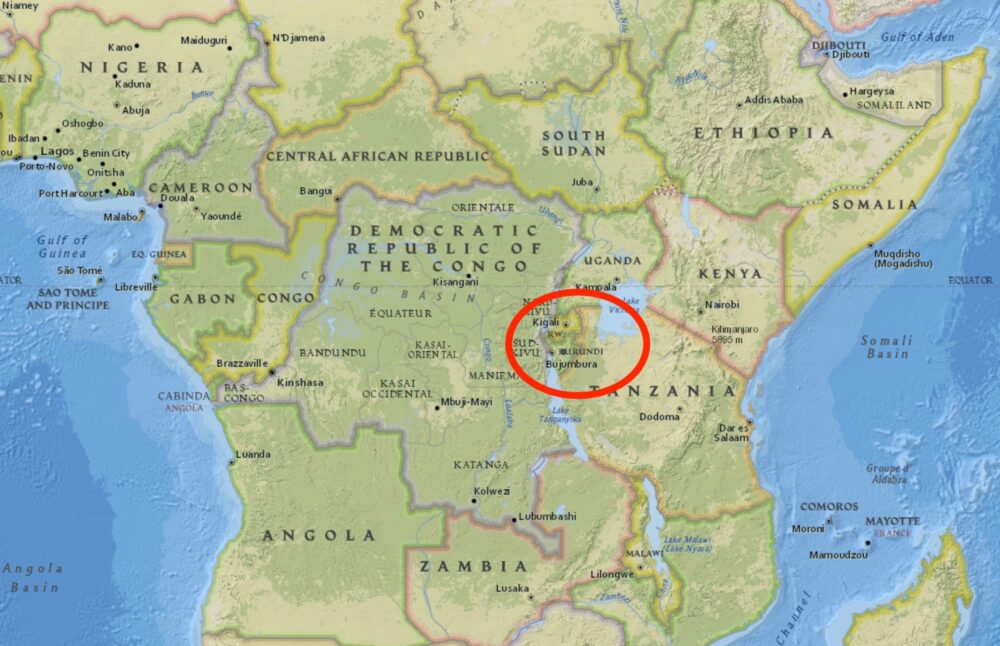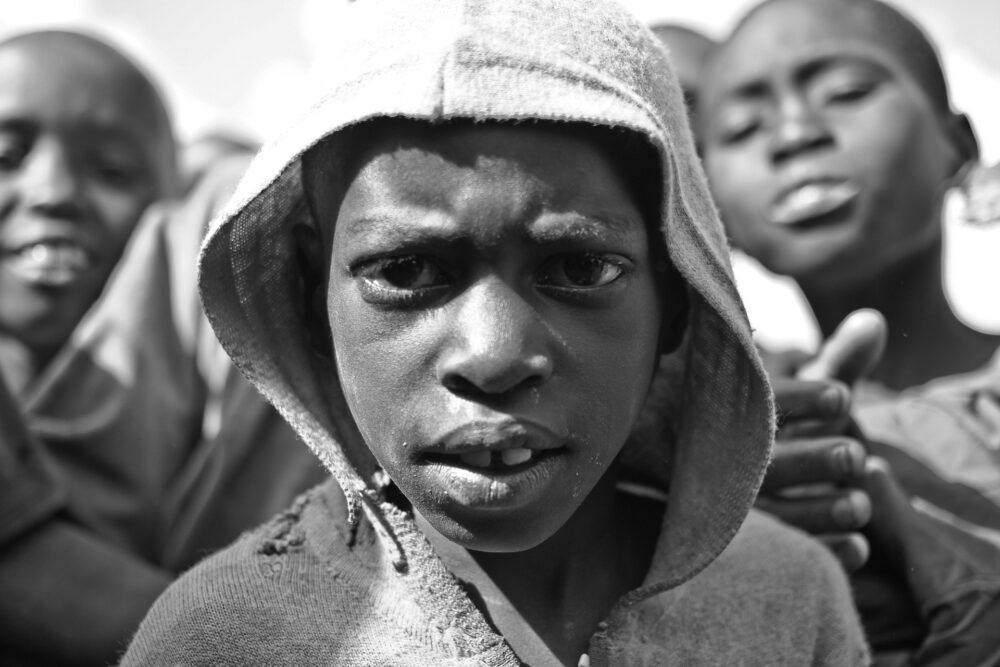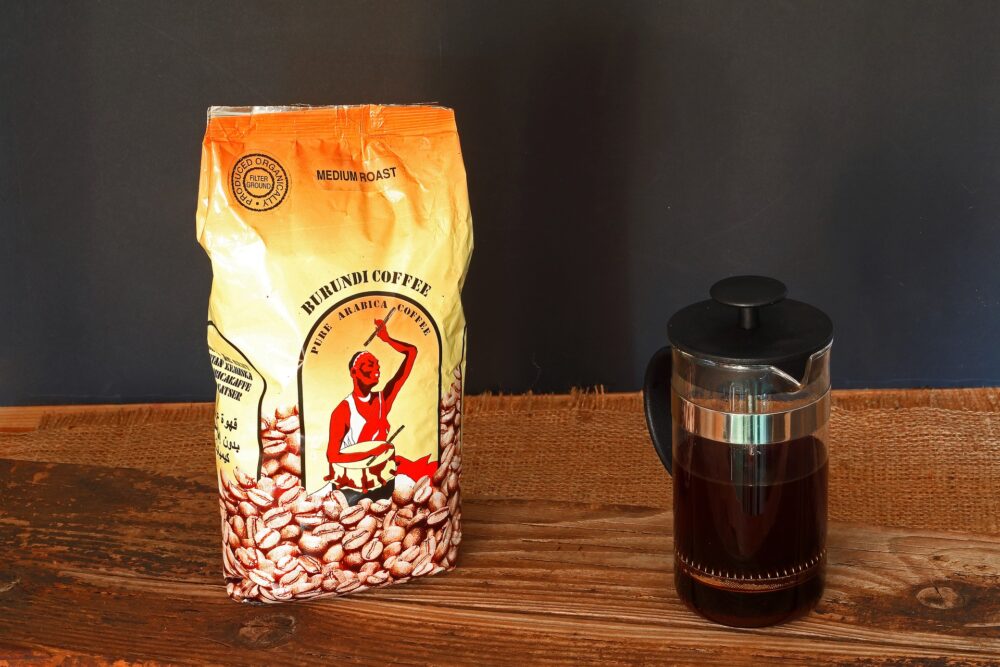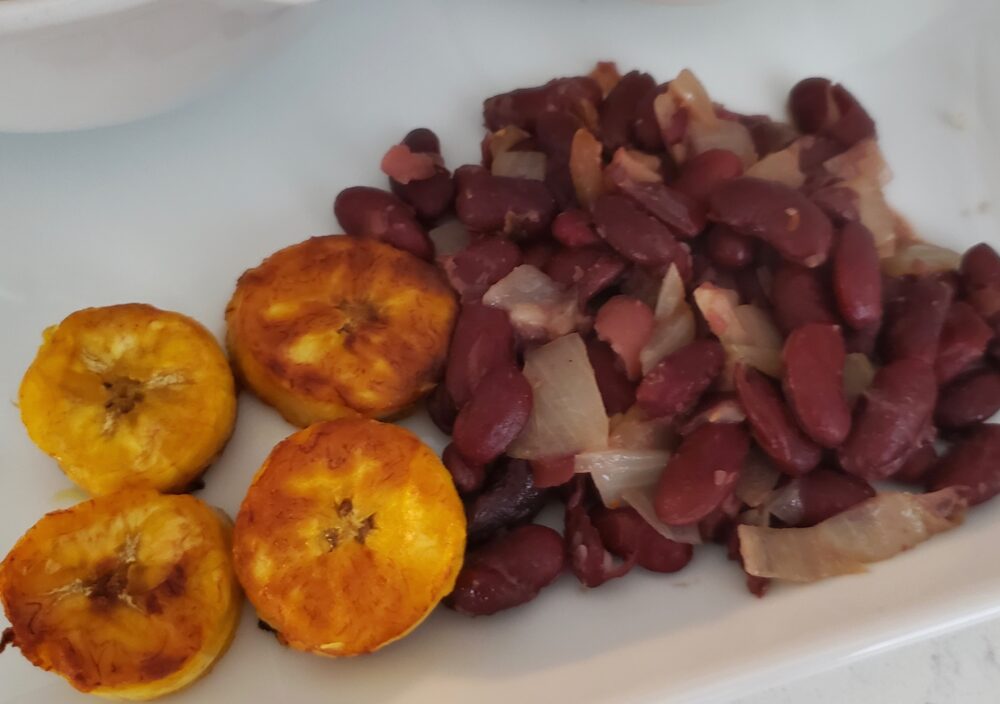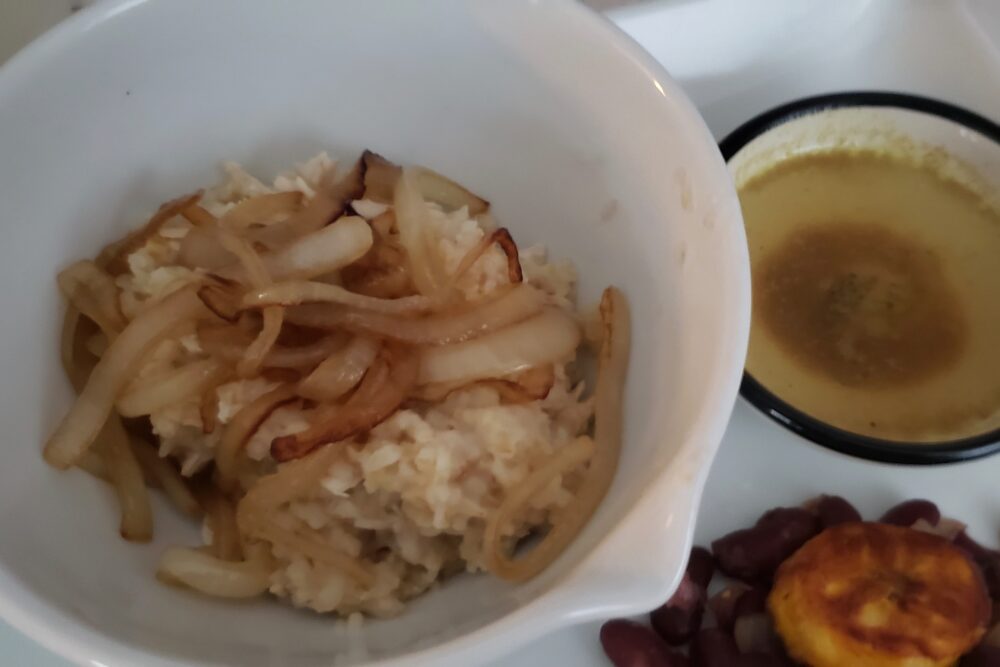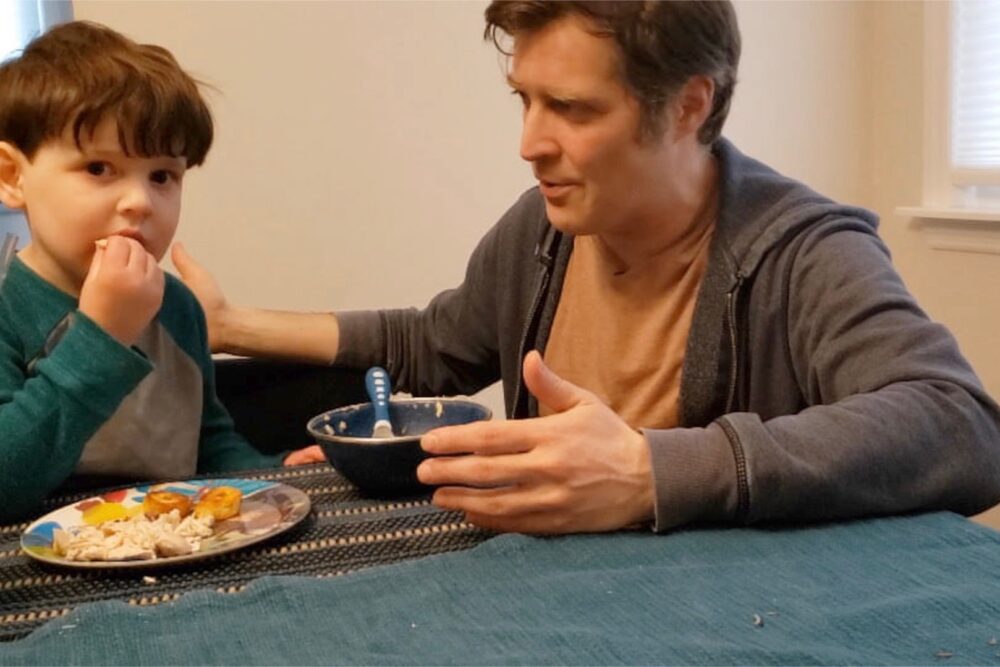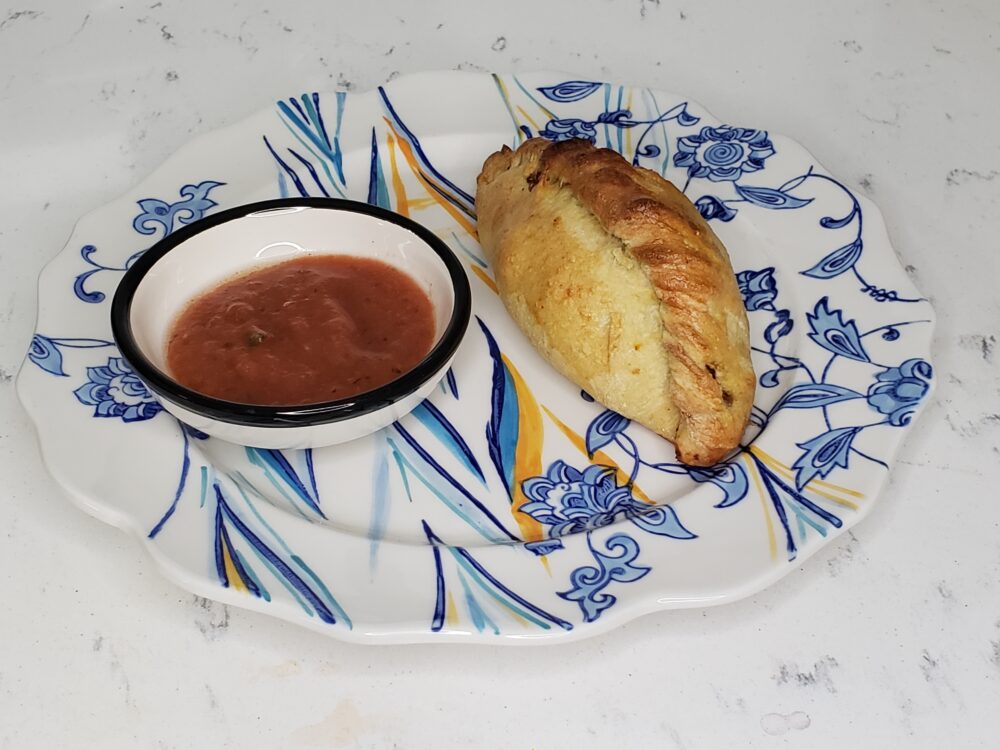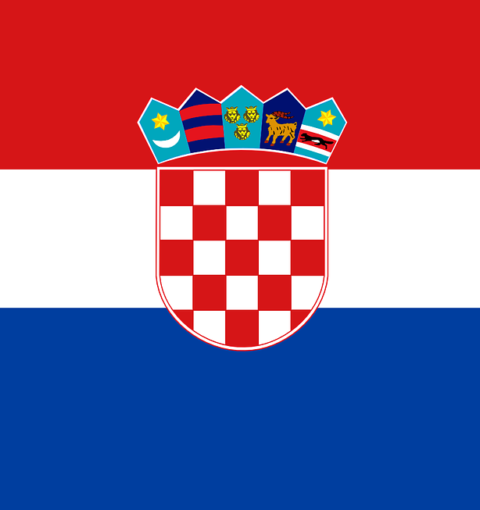And we’ve come to another milestone. We have now completed a meal from every country beginning with the letter B. Check and check.
We finish with another African country that sadly suffers from great poverty. Food insecurity is prevalent in Burundi (as well as our last country Burkina Faso) and Sam and I work to create two of the dishes that utilize the local ingredients and fill one’s belly in Burundi.
THE PLACE AND ITS CUISINE
Burundi is a landlocked country in the area where central Africa becomes Eastern Africa. Just like its neighbors Rwanda and the Democratic Republic of Congo, Burundi has suffered recent violent conflict between its two major ethnic groups – the Hutu and the Tutsi.
Many factors contribute to the great poverty and malnutrition that many Burundians suffer from. Civil unrest, natural disasters, lack of farmland to support its growing population (Burundi is the second most densely populated country in Africa).
Due to this, much of the diet here is comprised of vegetables. Meat is pretty scarce and most Burundians eat a vegetarian diet, consisting mostly of crops like beans, plantains, groundnuts, rice, and cassava.
Some families raise livestock including chicken, goat, and cattle. And you can sometimes find street vendors grilling lamb or goat. Beef, however, is rarely eaten because cows are considered sacred and a status symbol so they are very rarely slaughtered.
In addition to traditional agriculture based dishes, there is also some Asian, Arabic, and European influence on the cooking.
There is not much in the way of sweets, but Burundi does produce some noteworthy coffee (mostly for export) and drinks local sorghum beer and banana wine.
Traditional Dishes:
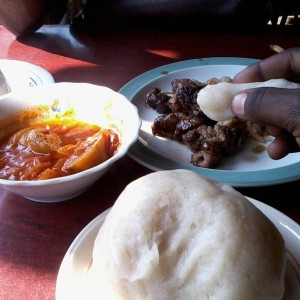
UGALI – this is considered the National Dish and is a porridge made of mashed cassava flour; it’s similar to Angolan funje and Botswana pap
NDAGALA – a small local fish (think sardine) from Lake Tanganyika that is fried whole in red palm oil, tomatoes, and spices
RENGA RENGA – this is a unique stew made from peanuts and potato leaves; it usually includes tomatoes and has a sweet flavor
MATURA AND MAHU – a local blood sausage made from beef, onions, garlic, and chili peppers
BURUNDIAN FOOD IN NEW YORK
East African food is even harder to find in the city than West African. Outside of a restaurant called Safari in Harlem, which specializes in Somali food, I have actually not been able to locate an East African restaurant. So if you want to try Burundian food in NYC, like many other cuisines, you’ll have to be invited into someone’s home. Or cook it yourself.
THE VIDEO
Sam is in a very silly mood during this video and it’s totally infectious.We go from reminiscing about his younger even sillier days to attempting to taste pure butter to taking phone calls on a plantain.
But we also get a little serious talking about the poverty in Burundi. We don’t get too deep into the troubles there, but Sam seems to understand there is a disparity between our lives and the lives in Burundi.
THE DISHES 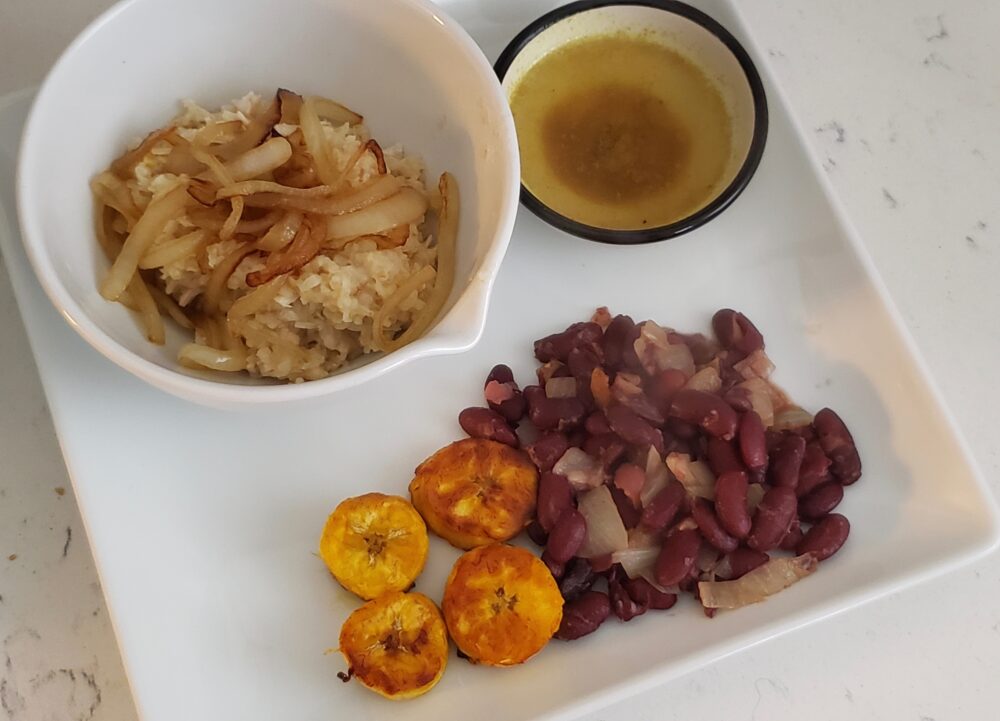
Many months back, when we were deciding on the dishes to make for our Armenia video, I came across a dish called Harissa or Harees. It is considered the National Dish and is essentially cracked wheat slowly cooked for a long time with meat. We picked some other dishes instead to represent Armenia.
But at the time I had no idea when we found ourselves cooking food from Burundi, we’d be faced once again with this bulgur porridge.
Boko Boko, or Boko Boko Harees is a very popular dish in Burundi that takes its origin from the Middle East. The dish was brought here by Arab settlers hundreds of years ago and introduced it to the Swahili people in East Africa.
Sometimes instead of chicken, this is made into a sweeter porridge by adding honey or sugar or milk. Sometimes lemon is added as well.
When it is made with chicken (which is the most typical), a small amount of chicken is shredded into the filling bulgur. That is one way to make the protein go much further since meat is far from abundant in Burundi.
It is usually served with a turmeric sauce that also is flavored from chicken gizzards and hearts.
The other dish we put together was pretty prevalent when I searched for Burundi recipes. However most of the sources were from other food bloggers like me who are not Burundian but are attempting to create a Burundian meal.
So I’m not sure if the two ingredients are usually served together like this. But there is no doubt that both beans and plantains are important to the Burundian diet. Ibiharage (fried beans) is a common dish and so is Ibitoke (fried plantains). So I decided to take an idea from my fellow food bloggers and combine the two.
THE RECIPES
Boko Boko Harees from Burundi
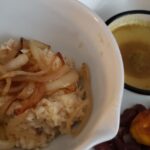
A hearty bulgur porridge that is also popular in the Arabic world, this version contains chicken pieces, fried onions, and a turmeric sauce.
Porridge
- 1.5 cups bulgur wheat
- 1.5 pound chicken breast
- 1 onion (grated)
- 2 cinnamon sticks
- 2 cardamom pods
- 1 tspn salt (to taste)
- 1.5 tbspn ghee (or butter)
Turmeric Paste and Sauce
- 1/2 inch turmeric root, ground (or 1 tspn turmeric powder)
- 1/2 tspn ginger powder
- 2 sets chicken giblets (gizzards and hearts)
- 1/2 cup water
- 2 tbspn ghee
- 1.5 tbspn sugar
Fried Onions
- 2 tbspn ghee (or butter)
- 1 onion (thinly sliced)
Bulgur Porridge
-
Soak bulgur in 1.5 cups of water for at least 3 hours.
-
Boil pre-soaked bulgur, chicken breast, grated onion, cinnamon sticks, cardamom pods, and salt. Once boiling, lower heat to simmer and cover. Cook for about 45 minutes.
-
When done, remove chicken breast and allow to cool slightly. When cool enough to handle, shred chicken.
-
Put shredded chicken back into the bugur wheat and add black pepper and stir over medium low heat.
-
Stir in 1.5 tbspn of ghee or butter and stir. Cook for a few more minutes. The porridge should feel like a dough but not too hard. If getting too hard, add more water and continue stirring.
Turmeric Sauce
-
Use turmeric paste or make your own by simmering ground turmeric, ginger powder, ghee, and black pepper. Cook until starting to thicken over medium low heat. Just a few minutes.
-
Chop chicken gizzards and add to 1/2 cup of water. Add turmeric paste (about 1.5 tspns), salt, and sugar. Cook on low for 10 minutes until thicken. Set aside and cool.
Fried Onions
-
Melt 2 tbspns ghee over medium heat in medium saucepan. Add thinly sliced onions. Continue stirring until onions get very dark, about 10-15 minutes.
-
Serve bulgur topped with onions and turmeric sauce on side.
Ibiharage and Ibitoke from Burundi
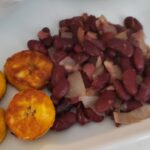
A simple hearty side dish using two of the main ingredients in Burundian cuisine – red kidney beans and plantains.
Ibiharage (Red Kidney Beans)
- 1 cup red kidney beans (soaked overnight)
- 2 bay leaves
- 1 onion (chopped)
- 1 garlic clove
- 1 tbspn vegetable oil
- 1/2 tspn chili powder
- 1 tspn salt
Ibitoke (Plantains)
- 2 plantains (sliced)
- 1 tspn vegetable oil
- 1 tspn red palm oil
- salt (to taste)
Ibiharage (Red Kidney Beans)
-
Drain soaked beans and add to a pot with clean water. Add bay leaves and boil for 25-30 minutes. Drain and set aside.
-
In a medium pan, add sunflower oil over medium. Cook onion and garlic clove until soft. Add cooked beans with salt and chili powder. Add some water and cook for 15-20 minutes.
Ibitoke (Plantains)
-
Heat sunflower oil and red palm oil in a frying pan over medium high. When hot, add slices of plantain spread out in the pan. Cook until brown and then flip the pieces over to fry the other side. When cooked through add salt.
-
Serve beans topped with plantains.
HOW WE SCREWED IT UP
Oh boy! As you can see from the photos, this was not one of our prettiest meals. I think I had a lot going on between making the turmeric paste, dealing with the chicken gizzards, and cooking the food!! It was not our best moment.
The Boko Boko was fine. It was a bit bland, but I think that was to be expected. Not sure what went wrong with the turmeric sauce, but it was watery and gritty. I probably should have used store bought turmeric paste instead of attempting to make my own. Also a bit more ghee or fat probably would have helped thicken it up.
The beans and plantains were fine. I don’t think this was a terribly complex dish and they came out as expected. Nothing special, but filling and nourishing.
SAM’S REACTION
Sam used to eat bananas, but recently decided he does not like them anymore. So I was not expecting him to try the plantains – even though I think he would have liked them. Sweet fried fritters – what’s not to like?
He also didn’t want to try the Boko Boko even though I compared them to couscous, which is a dish he usually eats. He did eat the shredded chicken which was cooked with the bulgur. So at least he got a bit of Burundian flavor.
And the shredded chicken breast was a winner. In fact, he gave it his highest rating yet: 3,000 stars!!
NEXT TIME
And next time we begin a new phase in the journey. The “C” countries begin with our second trip to east Asia to the country of Cambodia…

